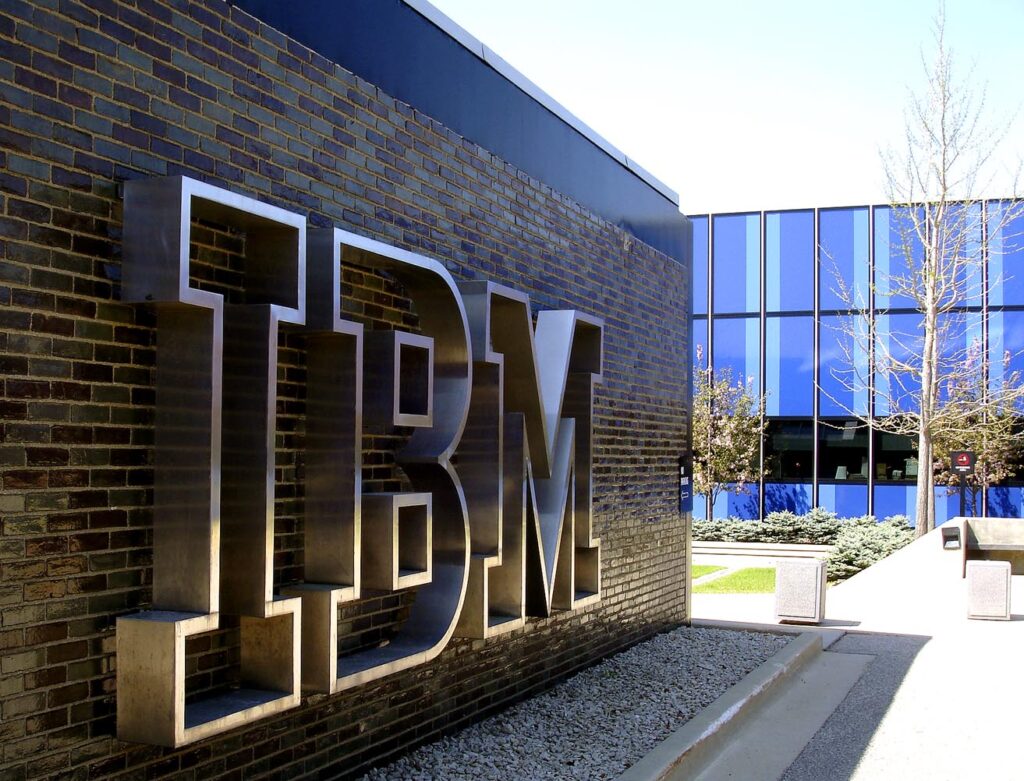IBM has announced its financial results for 2022, with success across business segments producing the highest revenue growth in a decade for the firm. A six percent rise has seen revenues of $60.5bn for the full year and $16.7bn for the fourth-quarter.
Hybrid cloud revenues reached $22.4 billion for 2022, up 11 percent year-on-year, 17 percent at constant currency, with notable implementations including the Canadian Imperial Bank of Commerce (CIBC) and Delta Airlines.
The firm’s Q4 software revenues rose 2.8 percent, eight percent at constant currency, to $7.3bn and its hybrid cloud and solutions grew by five percent, ten percent constant currency.
Of IBM’s software segment for Q4, Red Hat grew ten percent (15 at constant currency), and automation, data and AI, and security all rose by four percent (nine, eight, and ten percent at constant currency). Only transaction processing fell, shrinking by three percent, but at constant currency also saw three percent growth.
Consulting revenues saw modest Q4 growth of 0.5 percent, up 9.3 percent at constant currency, bringing in $4.8bn for the quarter. For the consulting segment, business transformation and technology consulting each grew by one percent, and application operations increased by two percent (up seven, ten, and 12 percent respectively at constant currency).
Infrastructure saw Q4 revenues of $4.5bn, growing 1.6 percent, up 7.4 percent at constant currency, and led by a 16 percent rise for IBM z systems, up 21 percent at constant currency. Hybrid infrastructure also brought six percent growth, up 11 percent at constant currency.
Cash flow for the year was $9.3bn, sitting below its target of $10bn due to higher-than-expected working capital needs. Net cash from operating activities was $10.4bn.
Strategic partners bookings also grew over 50 percent for the year, with SAP, Microsoft and AWS all bringing in over a billion dollars in revenue, and 2022 saw a grand total of eight acquisitions across IBM’s software and consulting divisions.
Lastly, a 61 percent reduction in carbon emissions has additionally been announced across IBM’s global real estate presence when comparing 2022 to 2010, with success attributed to IBM sustainability software.
Less than expected: job cuts follow IBM results
The results come alongside the announcement of job cuts of 1.5 percent, with 3,900 workers set to go out of the 260,000-strong team, costing IBM $300m. The cuts will focus on the workers remaining from Kyndryl and part of an AI unit; Watson Health.
Market analysts have been underwhelmed by the extent of the cuts, claiming investors were hoping for deeper cost-cutting measures. IBM’s CFO James Kavanaugh says the company will continue hiring in higher-growth areas, telling Reuters that the company was still “committed to hiring for client-facing research and development.”
IBM projections for 2023
Looking ahead the company expects the constant currency revenue growth to stay consistent with its mid-single digit model for 2023, projecting $10.5 bn in consolidated free cash flow, which would result in growth of more than $1bn year-on-year.
After accounts such as the BBC and the U.S Patent and Trademark Office moved forward on AI pursuits with IBM in 2022, AI will join Hybrid Cloud as a big focus for IBM in 2023. IBM also expects to deliver on its goal of building a 1,000 qubit quantum processing system in the coming year, after the launch of Osprey last year.
“IBM’s revenue growth and operating profit in 2022 demonstrate the strength and multiplier effect of our platform-centric approach to hybrid cloud and AI,” said James Kavanaugh, IBM senior vice president and chief financial officer. “Our client-focused portfolio and strong recurring revenue stream position IBM well for continued growth, solid cash generation and returning value to shareholders through dividends.”
“Our solid fourth-quarter performance capped a year in which we grew revenue above our mid-single digit model. We delivered solid free cash flow. But I’ll acknowledge there is more to do,” said Arvind Krishna, IBM chairman and chief executive officer.
“This year, we’ll unlock more productivity, expand our strategic partnerships and put more investment in specific growth markets. For 2023, we see revenue growth in line with our mid-single digit model range, and about ten-and-a-half billion dollars of free cash flow. This keeps us on a path of sustainable growth. Our perspective is clear – hybrid cloud and AI are the two most transformative technologies for businesses today.”




